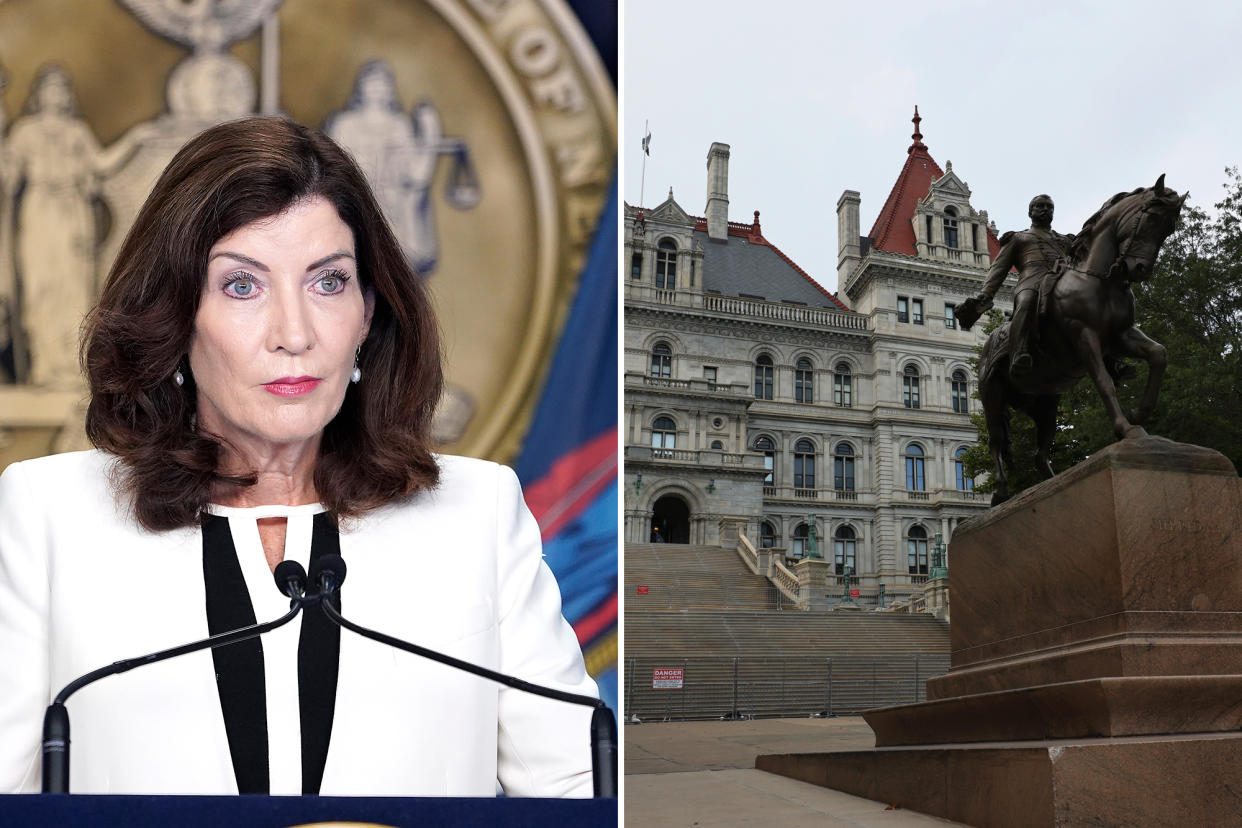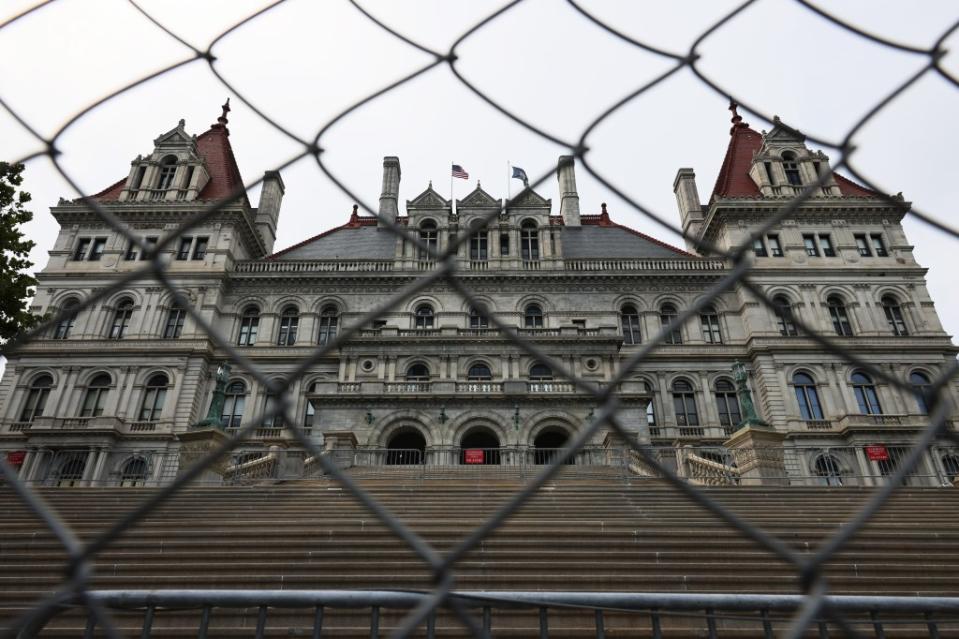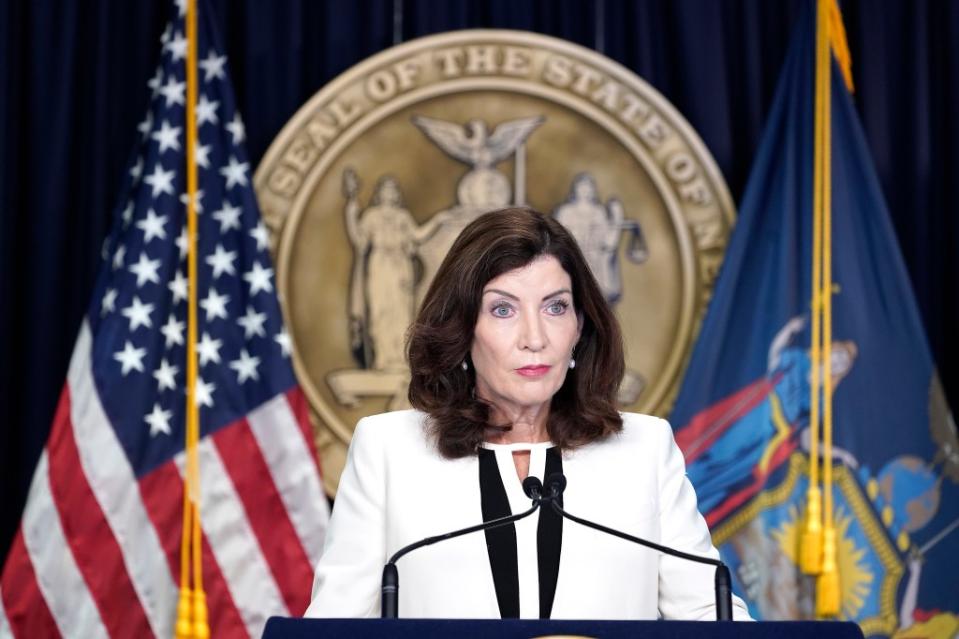NY lawmakers not likely to make April 1 state budget deadline — but may have deal in place soon

State lawmakers are expected to blow their April 1 budget deadline as talks drag on over potential cuts in education and Medicaid spending and how to build more affordable housing.
Sources familiar with the negotiations shed major doubt Monday on both sides passing a final spending plan and getting it signed by Gov. Kathy Hochul by the end of the day Sunday to meet their deadline, as lawmakers are eager to break for the Easter holiday.
But there remains hope that both legislative leaders and the governor could make a public announcement about a broad conceptual agreement by Thursday, with negotiators hammering out details of the stickiest parts of talks upon returning to Albany next week, a source said.

“Cautiously optimistic,” Hochul’s budget director, Blake Washington, told the Post exiting Hochul’s offices in the capitol Monday.
Most lawmakers who spoke with the Post on Monday were realistic that the budget would not be officially wrapped up on-time, though.
“Doesn’t look like it,” an assembly member said about the premise of a final deal being signed by Sunday.
Another said there’s a better chance of seeing the Easter bunny.
“Nothing’s done until it’s done,” state Sen. Liz Krueger acknowledged to the Post on Monday morning with a smile.
A rep for the state comptroller’s office said lawmakers and the governor have been informed that they need to pass a budget or an extension of current funding streams before noon next Tuesday to ensure state employees continue to be paid.
Among the most contentious issued being haggled over behind closed doors are Hochul’s proposals to alter the state’s education funding formula, reduce quickly ballooning Medicaid expenses and massively expand the state’s housing supply.

Hochul is battling for the school funding changes, which could result in a reduction of cash for almost half of school districts in the state. School districts, unions and lawmakers from both parties are generally united in their opposition to Hochul’s proposed cuts.
State senators are proposing a $1 million study to consider revising the state’s education funding formula moving forward.
Hochul is also floating cutting a wage boost for some home-health workers and other measures to rein in out-of-control Medicaid costs.
Lawmakers have flatly rejected those proposals.
But the most bruising and uncertain budget battle ahead is likely to center around Hochul’s vision for a broad deal to boost the state’s expanding housing supply. That package could include an extension and replacement of the current 421-a tax credit for developers to build affordable housing as well as other provisions meant to encourage housing development on state land.
The housing talks include fierce opinions from a diverse array of generally competing interests including real estate, unions and tenants rights groups.
Multiple fiscal experts tell the Post they’re less concerned about the budget being on time as much as they want to see a comprehensive spending plan.
“The priority should be fiscal stability, transparency and meeting the needs of New Yorkers,” said Citizens Budget Commission Director of State Studies Patrick Orecki.
“If they get that right, that’s worth a few days’ wait. The budget should slow spending growth, reject tax increases and boost housing. It should also include basic, multi-year financial plan tables so that the public knows the full costs and can see a clear picture of the state’s fiscal future.”

